Few people today would argue the importance of connecting with nature. Mounting research strongly indicates that spending time in nature benefits our physical and mental health, and our overall well-being as humans. It is particularly important for children—especially young children—to have frequent and varied opportunities for unstructured play in the natural world as a healthy and fun part of their everyday lives.
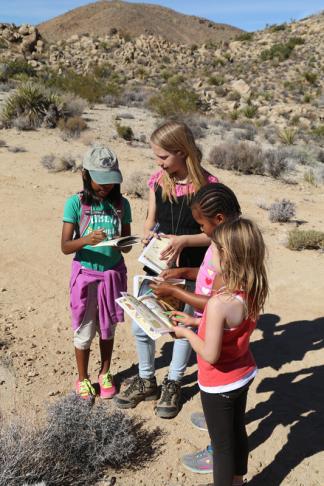
Hope for the Future
But there is hope. Organizations are beginning to come together worldwide to effect change. The Children & Nature Network (C&NN) supports grassroots and institutional efforts to connect children, families, and communities to nature around the world, and has established many partnerships to that end. C&NN is building a network of individuals, institutions, and organizations that see the value and importance of what Richard Louv calls a new endangered species: the child in nature. Through this growing network, one of C&NN's main initiatives is the promotion and establishment of Family Nature Clubs as a means of breaking down common barriers to connect children, families, and communities to nature.
What Is a Family Nature Club?
Family Nature Clubs (FNCs) are made up of groups of families with one or multiple organizers that invite others to share in their passion for the natural world and connecting children and families to it on a regular basis. They provide the support and security needed by many families to venture out into the world together, sometimes for the first time as a family. By accident and by design they address the multitude of factors keeping today's families out of nature. The fun element of this "play date on a trail" makes nature more competitive with the lure of digital devices. Asking families to make a commitment via the RSVP function on online meet ups helps over-scheduled families keep nature on their calendars (just like a gym buddy helps you keep your exercise appointment). Having an experienced leader to show them where to go to explore nature removes the uncertainties and hassles of finding a good place to go. And, the group setting provides reassurance to allay fear of strangers or dangers of nature itself.
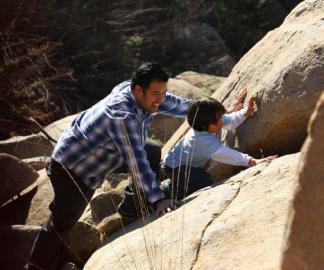
Getting Started with Family Nature Clubs
The concept of a Family Nature Club may not be a new one; they have informally existed for decades in some cases. But when Richard Louv wrote of their importance and value in Last Child in the Woods, he invited people to consciously go forth and start Family Nature Clubs as a vehicle for addressing nature-deficit disorder and restoring the broken bond between children and nature. Shortly thereafter, the Children & Nature Network, co-founded by Louv and others, created a resource to support those who would like to start a Family Nature Club. The Nature Clubs for Families Toolkit has since been translated into multiple languages.
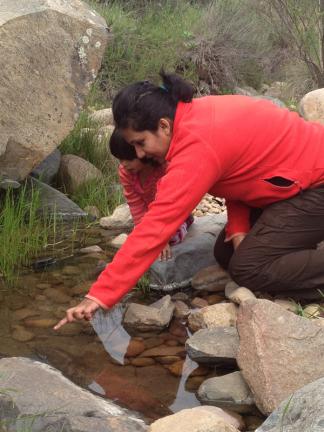
1. Plan and organize. Choose the organizational structure and logistical support that makes the most sense to you. You will need to decide how often you will meet, and how much time will be involved in each adventure. Most club outings range from 1 1/2 to 3 hours in length. It is recommended to plan and organize about 6 months worth of activities to get started if you can. It will pay off to have the legwork done as you're embarking on this amazing adventure.
2. Notify and advocate. Having people or partners ready to support your Family Nature Club will be one of the keys to its success. Talk with colleagues, friends, and family as you are getting ready to launch activities, and invite them all to join you. Word of mouth is often the strongest recruitment tool a club can have.
3. Develop a marketing plan. Be sure to target the family audience in your marketing, and don't forget to include extended family members such as grandparents, aunts, and uncles. Utilize social media, email, community newsletters, and other websites to announce your clubs activities.

5. Make it easy. Informed and prepared organizers and participants are often the happiest ones. Your workload will be simplified by giving members consistent information about what to expect and what to bring on each adventure. The list should include items such as water, snacks, good shoes, and sun protection. Share any basic rules or expectations for when the group meets, such a how long they can expect to spend in an area, to ensure that each participant feels welcome, comfortable, valued, and respected.
6. Let the adventures begin. It is a good idea to plan your meeting times 15 minutes ahead of the scheduled departure. You can actually state that you are meeting at 9:15 am for a 9:30 am departure. This gives families a 15-minute grace period that is often needed in families with small children. Once on site, welcome each of the participants and thank them for coming. During the group welcome, emphasize the value of following the children's lead and fostering a sense of wonder and awe as much as possible. Also be sure to review any safety considerations for the area, such as poisonous plants or animals to be aware of, slippery surfaces, etc.
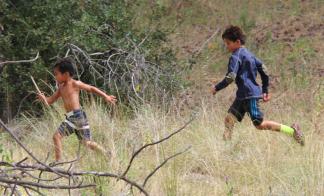
A Brighter Future for People and Nature
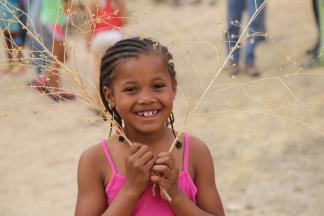
Additional Resources:
- Nature Play E-Guide for Families, Children & Nature Network and the Association of Zoos & Aquariums
- Pathways to Play: Overcoming Barriers to Nature Play, Children & Nature Network, AZA, & Disney
- Webinar on Risk & Resilience in Nature Play*, Children & Nature Network and AZA
*For this webinar you will be prompted first to register and will then proceed to the webinar recording.
About the Author
Janice Swaisgood is a bilingual educator by training, turned family nature advocate. Ironically, you will often find her on her computer, where she organizes people to get outside. She enjoys time exploring with her family and their club, Family Adventures in Nature San Diego. Her passion and enthusiasm are contagious! If you have questions about starting a Family Nature Club, contact Janice at [email protected].


